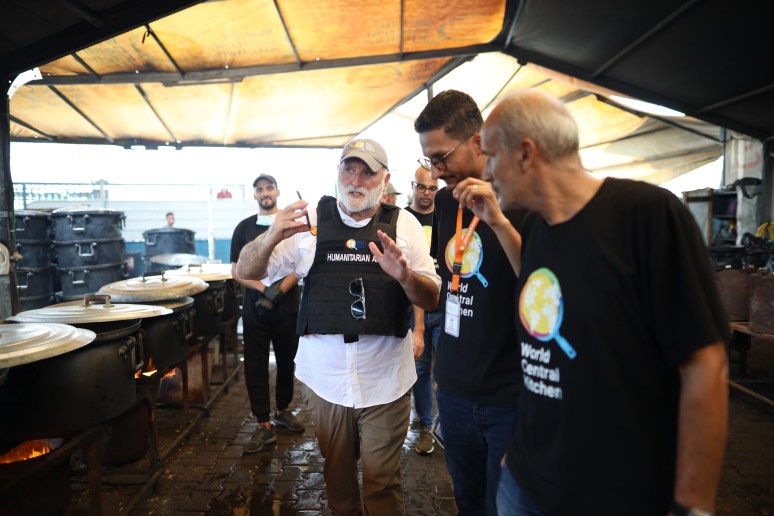Hurricane Otis causes devastation after rapidly intensifying

The strength and intensity of Hurricane Otis caught many people by surprise. What started as a tropical depression in the Pacific Ocean quickly turned into a massive hurricane that hit the coast of Mexico, slamming into Acapulco and smaller communities nearby. A NASA study showed that the storm strengthened into a Category 5 hurricane in a matter of hours, an incredibly rare occurrence that is likely to become much more common in the future. The study identified the cause for the rapid intensification as too-warm ocean temperatures spurred by the ongoing climate crisis.
Without enough warning to evacuate, people living on the southern Pacific coast of Mexico were forced to endure the Category 5 storm in their homes. Due to the rapid intensification, many families lacked the time to stock up on essentials before the hurricane hit. Sia Galiana is 86 years old and lives by herself in the town of Espinalillo, and she told our team how terrifying the storm was. “I thought I was going to die,” she said. “The roof of my home disappeared in a minute.”
Left: Sia Galiana in her home. Right: The roof of her home that was torn off by the hurricane.
When the storm passed, hundreds of thousands of people were left without access to water, fuel, or electricity. Landslides caused by the hurricane—which dumped 10 inches of rain on the region—made roads impassable, cutting residents off from help. World Central Kitchen’s team arrived in the midst of this chaotic aftermath and immediately began providing meals.
First arriving in Mexico City—as access to Acapulco was not yet possible—we got a hold of sandwiches, cases of water, and helicopters to provide immediate relief to impacted communities. Since arriving, the WCK team has been airlifting thousands of meals and bottles of water into areas cut off by the storm’s damage. “We have stabilized the rural communities with helicopter support [and meals] from restaurant partners in unaffected areas,” said Jason, WCK’s Chief Relief Officer, who is on the ground in Mexico. Our air deliveries are so reliable that people have begun waiting for our arrival, queuing in lines that our teams can see from the helicopters as they descend.
Left: WCK helicopter flies above the palm trees. Right: Damage in a town with a line of people waiting for WCK to arrive.
Reaching families in need in Acapulco was initially very challenging. Home to 900,000 residents, the city is also a popular tourist destination. People here are in urgent need of support as what food and water stocks survived the storm are quickly running out. To meet this widespread need, we established water and meal distribution sites in the city and have established a WCK Relief Kitchen to quickly scale our response.
“The situation is very complex,” said Fatima, WCK’s Senior Manager of Relief Operations for Latin America, who is also on the ground in Mexico. “Communication is slowly improving, and fuel supply has just started, but lines are very long.”
Lines are long not just for fuel, but also at tortillerias—which have been working through their stores of supplies to provide tortillas to their communities. “We are also working on supplying the local tortilla shops with supplies, as it’s the bread of life here and the shops are running out of supplies that survived the storm,” said Jason.
Left: The lines at the local tortilleria. Right: Jason (beige vest) speaks with members of the WCK team amid the storm’s wreckage.
WCK’s founder and Chief Feeding Officer, José Andrés, joined our team in Mexico shortly after the storm and was struck by the devastation wrought by Otis. “The situation in Acapulco is as bad as I’ve seen,” he said, “and I’ve been very much in every Category 5 hurricane over the last 15-16 years.”
We have been scouting in communities, speaking with residents and restaurant owners, trying to get a sense of where help is needed and how WCK can fill those gaps. As our teams scout, we always make sure to have food and water for the people our teams meet, or even just pass along the way. We offer tortas with cochinita pibil and beans to people walking on the road. To make sure the water supplies last, the team pours part of the water bottles we have into the empty water bottles people are carrying with them—carefully rationing it out so we can share water with more people.

The situation in Acapulco is as bad as I’ve seen, and I’ve been very much in every Category 5 hurricane over the last 15-16 years.
José Andrés
WCK Founder and Chief Feeding Officer
WCK continues to move forward, working on the logistics to get much-needed supplies into Acapulco, and create a plan to take care of immediate needs. Meanwhile, our restaurant partners are using what resources they still have access to to create delicious, nourishing meals for their community. A well known chef in Acapulco—Lalo Palazuelos—has offered our team the use of his restaurant Tres Fuentes to cook meals from, while the chefs and staff at other restaurants still able to safely operate after the storm cook meals from their own facilities.
As José says, “When you need medical service, you bring doctors and nurses. When you need the rebuilding of infrastructure, you bring in engineers and architects. And if you have to feed people, you need professional chefs.” Right now, Acapulco and its surrounding communities need resources and chefs, and WCK and our partner restaurants are working urgently to meet that need.
Learn more about our Hurricane Otis response here. For real-time updates, follow WCK on Twitter, Instagram, and Facebook.
Help us keep cooking for families who have been impacted.











